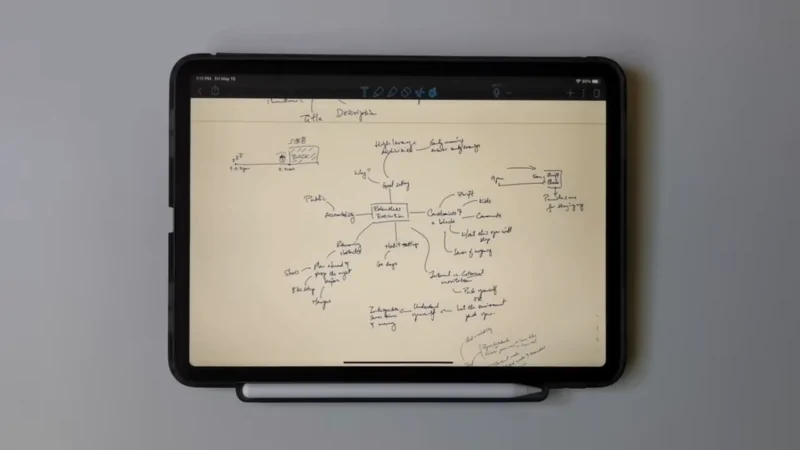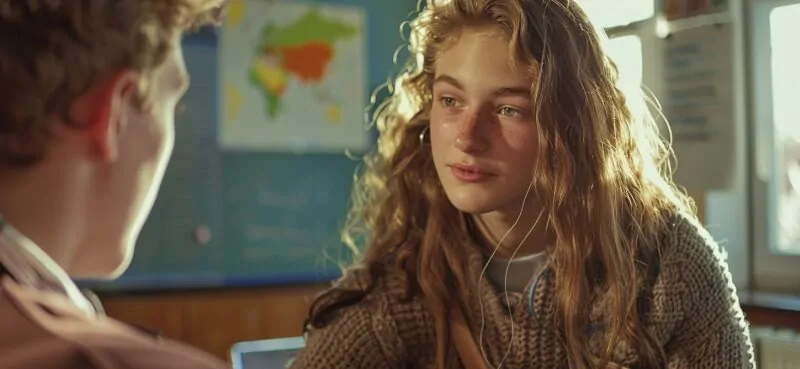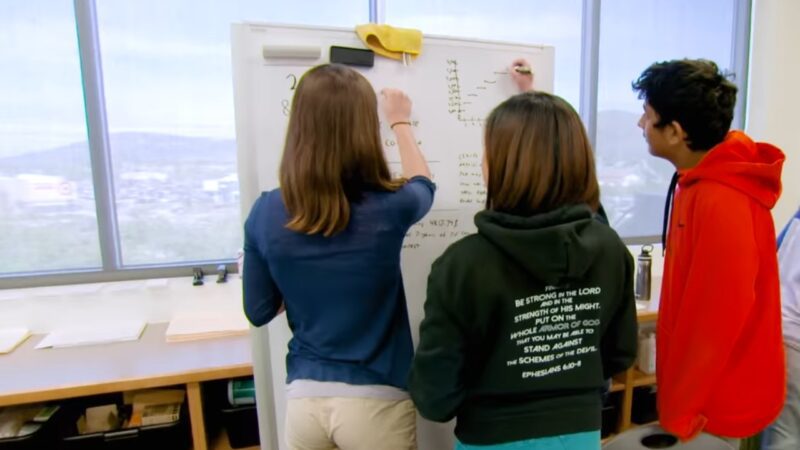
Share Post:
In today’s post, I’ve put together a list of 25 instructional strategies that can boost active learning, critical thinking, and collaboration in your classroom.
From tried-and-true techniques to new and innovative methods, these strategies are designed to help you create a dynamic and inclusive learning environment that meets the needs of all your students.
1. Mind Mapping

Creating visual representations of information to help students see connections and hierarchies.
Example: Students create a mind map to visually represent the relationships between characters in a novel, with lines and arrows indicating connections and interactions.
2. Storytelling
Using narratives to engage students and illustrate important concepts or principles.
Example: A history teacher shares a narrative about the experiences of a soldier during World War I to help students better understand the conditions and challenges faced by those in the trenches.
3. Guided Notes
Providing students with partially completed notes that they complete during a lecture or discussion.
Example: Students are provided with an outline of a lecture, including key points and partially completed sentences, which they complete as they listen to the lecture.
4. Analogies
Drawing comparisons between new concepts and familiar ones to facilitate understanding.
Example: A teacher explains the concept of diffusion in biology by comparing it to the way a drop of food coloring disperses in a glass of water.
5. Debate

Assigning students to argue opposing viewpoints on a controversial issue to develop critical thinking and communication skills.
Example: Students are divided into teams and assigned to argue either for or against a proposed law or policy, such as implementing a carbon tax or raising the minimum wage.
6. Fishbowl Discussion
Arrange students in an inner circle to discuss a topic while the outer circle observes and takes notes.
Example: A group of students discuss a controversial topic in the center of the room while the rest of the class observes and takes notes, and then the groups switch roles.
7. Stations
Organizing the classroom into different activity areas, where students rotate through tasks or exercises.
Example: In a science class, students rotate through various stations where they conduct experiments, analyze data, and discuss their findings.
8. Exit Tickets

I ask students to write a brief summary or reflection at the end of a lesson to assess understanding.
Example: At the end of a lesson on photosynthesis, I have my students write a brief summary of the process or answer a specific question to demonstrate their understanding.
9. Mnemonic Devices
Teaching memory techniques to help students remember key information.
Example: A teacher introduces the acronym PEMDAS (Parentheses, Exponents, Multiplication and Division, Addition and Subtraction) to help students remember the order of operations in mathematics.
10. Brainstorming
Encouraging creative thinking by generating ideas without judgment or limitations.
Example: In a creative writing class, students generate a list of possible story ideas and plot points before selecting one to develop further.
11. Gallery Walk
I arrange student work or information around the room, allowing students to circulate and engage with the material.
Example: I have my students create posters about different renewable energy sources and then circulate around the room to learn about each source from their peers’ work.
12. Peer Teaching
Allowing students to teach and learn from one another.
Example: Students who have mastered a particular skill or concept teach it to their classmates, reinforcing their own understanding and helping others learn.
13. Role-Playing
Encouraging students to act out scenarios to better understand different perspectives or situations.
Example: Students act out a negotiation scenario between two countries, taking on the roles of diplomats to understand the complexities of international diplomacy.
14. Case Studies
Analyzing real-life situations to apply theoretical concepts and develop problem-solving skills.
Example: In a business class, students analyze a real-life company’s strategic decisions and discuss the impact of those decisions on the company’s success.
15. Differentiated Instruction
I adapt teaching methods and materials to meet the diverse needs of individual learners.
Example: I provide multiple options for students to demonstrate their understanding of a concept, such as writing an essay, creating a visual presentation, or performing a skit.
16. Project-Based Learning
Engaging students in real-world projects that require problem-solving, collaboration, and critical thinking.
Example: Students design and execute a community service project, such as organizing a food drive or creating a public awareness campaign about environmental conservation.
17. Flipped Classroom
Delivering content outside of class (e.g., through videos) and using class time for interactive activities and discussions.
Example: Students watch a video lecture on the causes of the Great Depression at home and then participate in a simulation activity in class to deepen their understanding.
18. Jigsaw
Dividing a topic into smaller parts, assigning each to a group of students, and then reassembling the pieces to form a complete understanding.
Example: A class is divided into groups, with each group researching a different aspect of World War II. Then, students form new groups with representatives from each original group, sharing and combining their knowledge.
19. Concept Mapping
I create visual diagrams to represent relationships between ideas and concepts.
Example: I have my students create a concept map to show the connections between various elements of photosynthesis.
20. Think-Pair-Share
Encouraging students to think individually, discuss with a partner, and then share with the class.
Example: After introducing a new concept, a teacher asks students to think about an example, discuss it with a partner, and then share their example with the class.
21. Graphic Organizers
Providing visual tools to help students organize and comprehend complex information.
Example: Students use a Venn diagram to compare and contrast two characters from a novel they have read.
22. Socratic Questioning
I engage students in critical thinking through open-ended questions and dialogue.
Example: I facilitate a class discussion on the impact of social media on society, asking open-ended questions that encourage my students to think critically and analyze different perspectives.
23. Cooperative Learning
Using small-group activities to promote collaboration, peer support, and collective problem-solving.
Example: Students work in small groups to create a presentation on different aspects of the water cycle, with each group member responsible for one specific aspect.
24. Inquiry-Based Learning
Encouraging students to ask questions, explore concepts, and develop their own understanding.
Example: Students are given a question, such as “What factors contribute to climate change?” and are encouraged to research, explore, and discuss the topic in small groups. To aid their research, they can also utilize educational YouTube channels, which offer a wealth of visual and interactive content.
25. Direct Instruction
Explicitly teaching content using lectures, demonstrations, or guided practice.
Example: A teacher demonstrates how to solve a quadratic equation step-by-step on the whiteboard and then assigns practice problems for students to complete.














